Breathing Easy: How To Optimize Ventilation in a Sauna
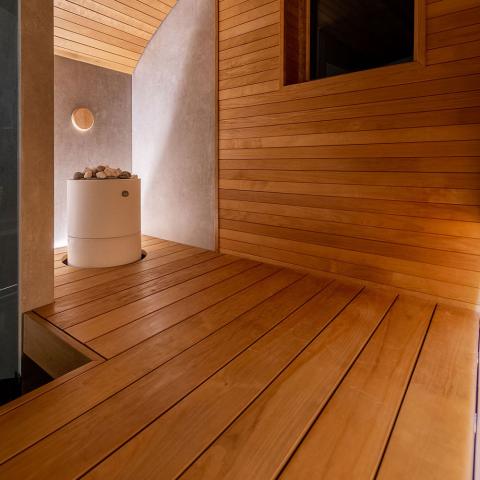
A pleasant sauna experience depends on multiple factors, including air temperature, humidity, carbon dioxide levels, and oxygen levels. Each of these factors is influenced by the ventilation in a sauna.
A good sauna has good ventilation; it is as important as heater placement and bench height.
Let’s discuss the significance of air quality in Finnish saunas and the various ventilation solutions available to provide bathers the most comfortable and enjoyable sauna experience.
Ventilation in a Sauna: Why It Matters
- Carbon Dioxide (CO2) Levels – without ventilation, saunas can reach elevated CO2 levels from breathing alone. In fact, the CO2 levels in a typical sauna are twice the recommended exposure level of 1,000 PPM. High levels of CO2 can cause fatigue and can be dangerous in the long and short term.
- Reduce stratification – saunas without adequate ventilation could result in a sauna where the bather’s head is hot and their feet are cold. The goal is to get fresh air into the sauna near the heater and exhaust it low on the opposite wall. By circulating air this way, the sauna will have more even heat.
- Eliminate mold risk – an airtight wood sauna with steam provides ideal conditions for mold to thrive. Saunas can avoid getting moldy by being well-ventilated. You may want a mechanical exhaust for this reason alone in basement saunas.
- A better sauna experience – you will feel more refreshed after a sauna that has good ventilation.
How Much Ventilation Is Required?
To maintain proper air circulation, it is essential to change the air approximately 6 times per hour in a private sauna.
It is advisable to ensure that ventilation openings comply with the standards outlined in UL Specification 875.
Ventilation Solutions for Saunas
Sauna ventilation systems are unique due to the high temperature and humidity levels in the sauna room. Properly designed ventilation systems ensure fresh air circulation and prevent the loss of steam (löyly). There are two primary ventilation solutions for saunas: natural ventilation and mechanical ventilation.
Passive/Natural Sauna Ventilation
A. Position the fresh air inlet near the floor and close to the stove.
B. Place the outlet far from the stove and near the roof. The stove effectively circulates air; the outlet’s primary purpose is to remove humidity after bathing.
Natural ventilation relies on gravity and the laws of physics to circulate air. This method is particularly suitable for outdoor sauna cabins with wood-burning stoves, as the stove acts as a natural air outlet and the combustion brings in fresh replacement air.
However, natural ventilation can be challenging to implement with electric stoves and may require more specialized design solutions.
Some effective natural ventilation methods include:
- Semi-open floors: Wooden planks with gaps to allow fresh air from underneath.
- Low inlets/outlets: Positioned close to the floor, preferably in different directions.
- Underground air ducts: Metal casings placed near the stove.
How to ventilate a sauna passively
Supply air vent placement: For mechanical exhaust ventilation, position the supply air vent above the heater. For gravity exhaust ventilation, place it below or beside the heater. The supply air pipe’s diameter should be between 50-100 mm. Avoid placing the supply air vent near the temperature sensor for heaters with a separate sensor. Consult the heater installation instructions for more details.
The intake vent should be a grill that is not operable.
Exhaust air vent: Install the exhaust air vent as far from the heater as possible. The exhaust air pipe’s diameter must be twice that of the supply air pipe.
One or two operable sauna exhaust vents like this mobile sauna from KOV Sauna can be installed high or low on the wall furthest from the heat source. As long as they are operable, we recommend erroring on the side of having too much exhaust ventilation which will help dry out the sauna after use. The best way to keep a sauna clean and looking new is to run it hot with very fresh air after use.
Many builders prefer installing exhaust vents below the benches to maximize the efficiency of the sauna. However, if the exhaust vents are below the bench they are more difficult to operate. There are pros and cons to each method that is unique to your sauna.
For what it’s worth, Harvia and most Finnish sources now recommend installing the exhaust vent low on the wall for both passive and mechanical vents.
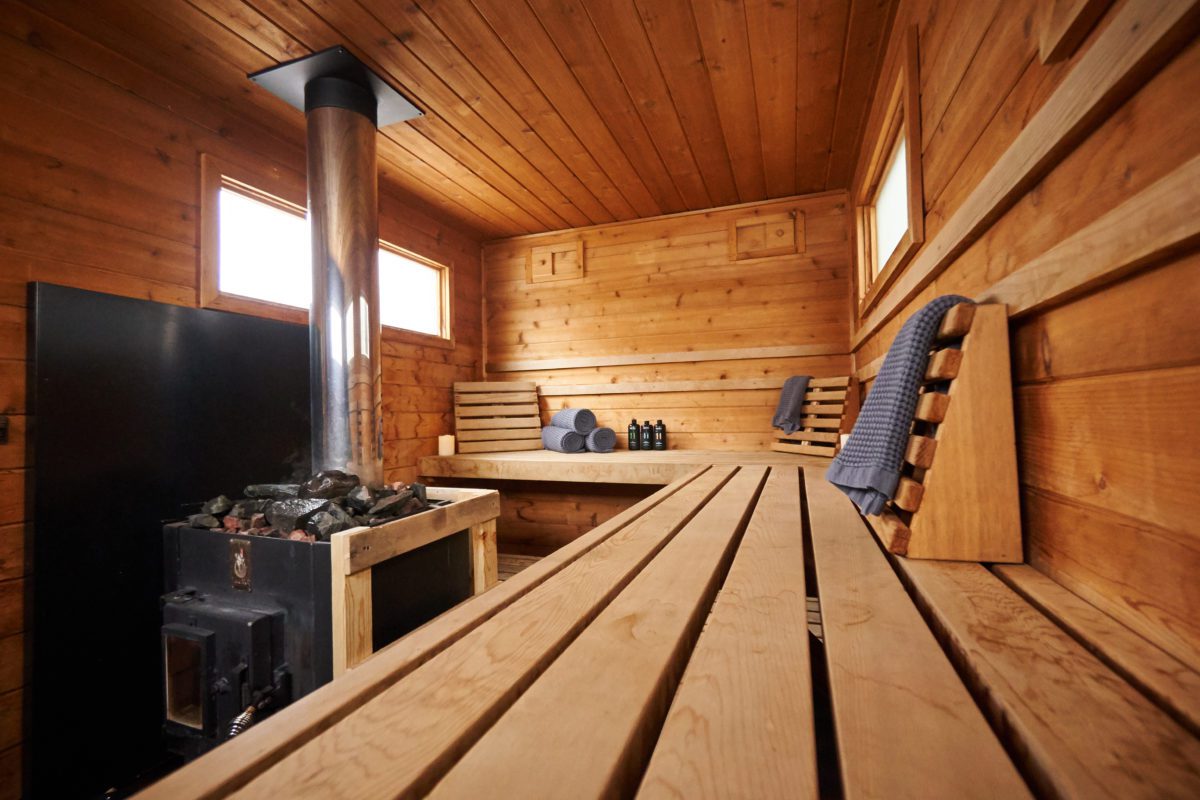
Another consideration when determining the need for ventilation in a sauna is how much air volume the sauna has per person. It is recommended that a sauna has 3 cubic meters of volume per person. If your sauna has that much space or more, you can more easily get away with passive ventilation. If your sauna hosts a lot of people, you should consider mechanical ventilation.
Gravity-Exhaust Ventilation
The most advanced type of passive ventilation is called Gravity-Exhaust Ventilation. It uses temperature differences, gravity, and wind to create a force that’s often comparable to mechanical ventilation.
If you can get a system working with these principles, you will not need to add mechanical ventilation. However, this can usually only be achieved outdoors and requires access to a wall cavity. This is definitely a technique for the early stages of sauna planning.
With a wood stove, gravity-exhaust can be achieved by introducing fresh air under the stove, and exhausting it high on the opposite wall. The chimney effect from combustion will draw in plenty of fresh air through the floor, you would feel a significant breeze of fresh air coming in through the intake
Here’s an example diagram from Harvia, featuring a wood-burning stove:
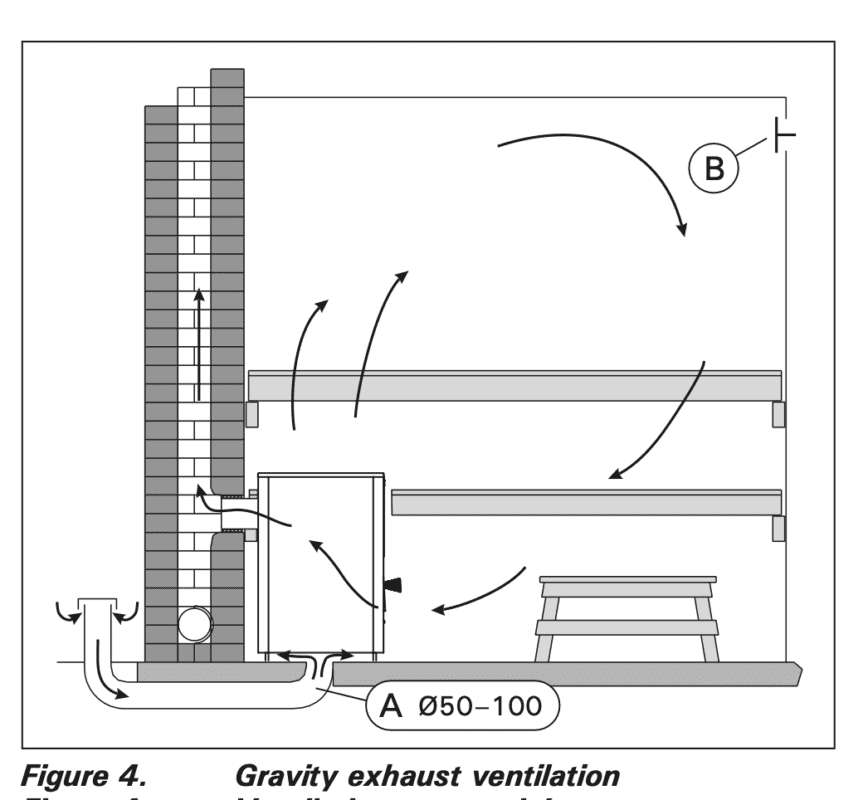
Mechanical Ventilation
Mechanical ventilation systems use a combination of ducts, heat exchangers, dampers, and fans to circulate air in buildings. This method is popular in modern Finnish homes and apartment buildings, particularly when the sauna is located indoors.
A. Install the fresh air inlet about 500 mm above the stove.
B. Position the outlet near the floor, such as beneath the benches.
They can be very simple, especially in outdoor saunas where the system consists of a single exhaust fan low on the wall opposite the heater. Such a system solves sauna stratification, CO2, and fresh air concerns with minimal noise, expense, and difficulty.
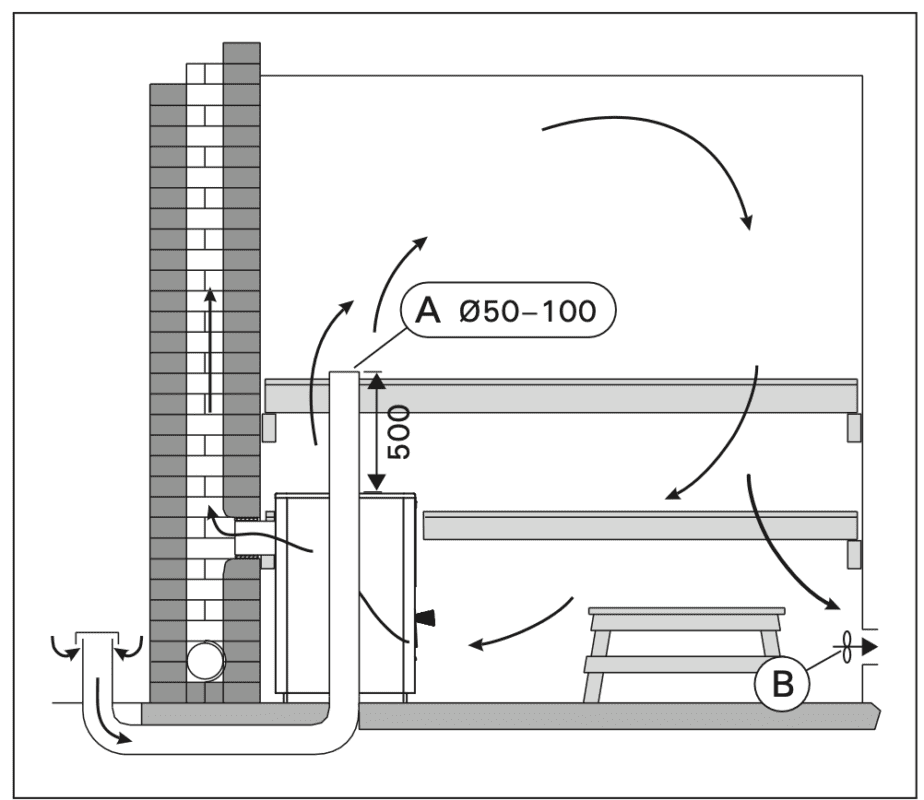
However, there are good reasons for having an exhaust fan on the ceiling like you would in a bathroom. We would recommend this approach if you are concerned about mold or high humidity levels after your sauna. Research conducted by the Finnish technical research institute VTT recommends the following configuration:
- Fresh air supply: Positioned above the stove, not in the ceiling.
- Return vent: Located below the “feet bench.”
- Exhaust vent: Placed in the ceiling to remove hot and damp air after use.
Adjustable volume is also recommended for mechanical ventilation systems to provide flexibility and achieve optimal air quality.
Mechanical Ventilation from the changing room
For a ‘best of both worlds solution, have passive ventilation in the sauna room and mechanical ventilation that exhausts to the outdoors located in the changing room. For this method, ensure at least a 100 mm gap beneath the sauna door.
This will pull air from the hot room under the door and draw intake air from the vent near the heater. This method allows you to use standard equipment for ventilation, as fans that can handle sauna hot room conditions are much more expensive.
Final thoughts and FAQ
Air quality is a critical factor in ensuring a pleasant sauna experience. Proper ventilation and design, along with regular cleaning and maintenance, will help create the perfect Finnish sauna environment. Consult with an HVAC professional to find the best ventilation solution for your sauna and enjoy the benefits of fresh, clean air.
Is ventilation more important in wood-fired or electric saunas?
It’s hard to say. Wood combustion produces CO2 but it may be offset by the chimney effect which is a major driver of fresh air in wood saunas. The primary culprit in most saunas is human exhalation, and the greatest risk is likely an air-tight electric sauna.
Can I vent into my house?
Venting into your house is OK for controlling CO2 levels but it could create mold problems, especially in a basement or humid home. If you are exhausting sauna air into your home, make sure you are able to inspect the areas with increased humidity levels for signs of mold. It would be wise to have a mechanical exhaust fan in the surrounding room that will move humid air outdoors when humidity levels reach a certain level.

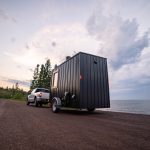 Minnesota
Minnesota